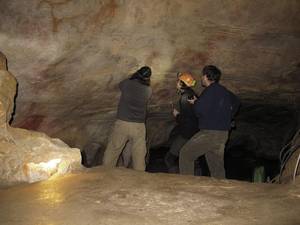In search of the age of rock art
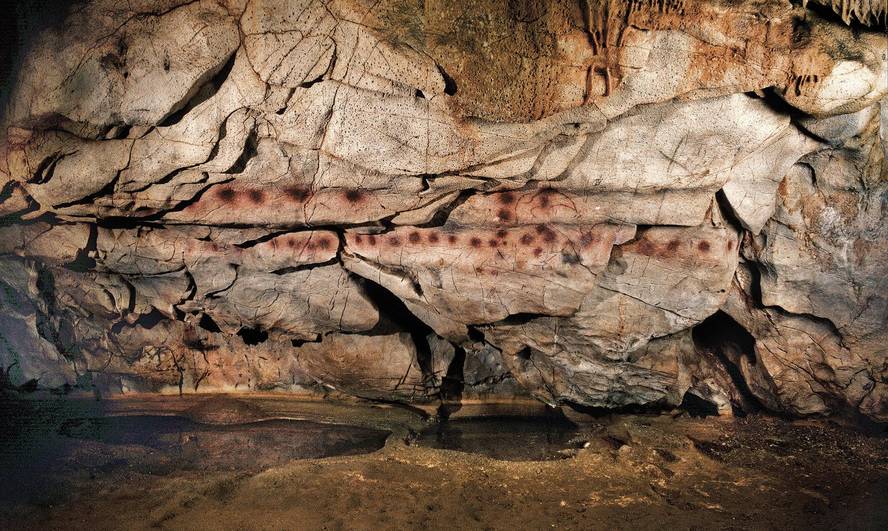
We usually use words to say what we think, but often words are not enough. Gestures, caresses, ornaments, dresses... There are many ways to express feelings, desires, and beliefs, and one of them is art. If we go back thousands of years in history, we also find artistic manifestations. But, when did the human being begin to express in this way his inner aspirations? According to a study by a group of international researchers, thousands of years before the expected. In the cave of El Castillo, in Cantabria, the oldest cave painting in Europe has been dated, a succession of records of at least 40,800 years old.
The cave of El Castillo is located in the Cantabrian town of Puente Vies. The hole of the cave is a patrimony of humanity and in it there are 275 paintings that are witnesses of the history of man. One of them is the oldest work of art dated in Europe, has at least 40,800 years and is a great point or disk drawn with red pigments. According to the datations made to date, scientists attributed to this painting an age of 30,000 years. However, new data indicate that it is 10,000 years older than was thought.
"We thought it was necessary to put the same thing as Labarreta's art, that's why we started research," explains scientist Marcos García Díez. Marcos García Díez is professor of the department of Geography, Prehistory and Archaeology of the UPV and one of the four scientists who have participated in the research. Together with him work the researcher of the University of Southampton Alister Pike, the German scientist Dirk Hoffman of the research center of the Human Evolution of Burgos (CENIEH) and the Portuguese researcher João Zilhão of the Institute of Research and Advanced Studies of Catalonia (ICREA). The first results of his research were collected in the journal Science.
"So far, we worked in the world of hypothesis, dating by style, without real numbers," explains García Díez. Scientists traditionally use two dating systems to date rock art, both limited: carbon 14 technique and paint style. With the carbon 14 system, the organic components present in the paintings, the charcoal are analyzed. But, according to García Díez, this technique can be used in few paintings. In fact, "only between 15% and 20% of the paintings are made with organic matter, charcoal, so up to now about 80% of the paintings have not been dated by empirical methods."
This is the case of most of Cantabria's paintings. In the absence of carbon, a dating system by style has been used to determine the age of these works. "In these cases a painting is basically faulted compared to others, not independently - said researcher Dirk Hoffman -. Therefore, this system is relative, there is no correct dating and it is based on a conviction. People who work with rock art need to make direct dating, measure age directly."
Uranium/Thorium Technique
The Hands Panel of the cave of El Castillo is one of the most important spaces of European rock art for its number of images, its technical and thematic variety. In the rounded walls of stone you can see pictures of bison, drawings of signs, and rudies more unusual as the human hands drawn with red pigments.
The groups of international researchers have used uranium/thorium technique in this panel to date rock art. The use of this technique has not been very common in the dating of the paintings.
The uranium/thorium technique does not directly cover the work but rather the calcite layer that has been formed on it. "If we look at the walls, in some areas we see calcite deposits - said García Díez- originated by the water that has fallen on the wall."
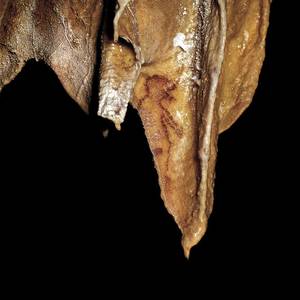
On the paintings accumulate different layers of calcite, of which the researchers analyze the samples. "The picture is not played. This method does not damage painting," said García Díez. "We slowly release the calcite and take samples at different depths. Thus, we will not have a single datation, but a series of datations".
The objective is to obtain deeper and deeper samples until the first traces of the painting are appreciated. That's where they stop scraping. "If the calcite is placed on rock painting, before the calcite that was there was accumulated --matiza Hoffmanek-, we know that the painting is older than the calcite that we have torn." Thus, by dating the calcite, they get the minimum age of these paintings.
Laboratory CENIEH
The process that has begun with the collection of samples continues in the laboratory. The calcite sample is analyzed in the research center of the Human Evolution of Burgos.
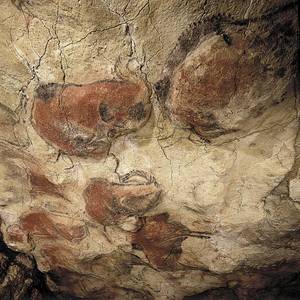
The uranium/thorium technique is not new, it is about 40 years old. However, in the last fifteen years the mass spectrometers have experienced remarkable technological development, which now allows to work with very small samples. "Alpha technique is spectrometry, that is, uranium breakdown products are detected. Currently the mass necessary for the measurement is 10.000 times smaller than a few years ago. Thanks to this, it is now possible to go to the cave and analyze the samples taken from these small calcite areas. It was not possible to work with them 10 years ago," explains Hoffman.
Hoffman separates the chemical elements from the calcite in the clean laboratory. "99.9% of the sample is calcite, and we don't want, we want uranium and its concentration is very low: a few hundred nanograms per gram." The result of this separation is a dissolution containing uranium and thorium. Through mass spectrometry, the ratios of both elements are measured.
Over time, the uranium-238 isotope in nature is transformed into a thorium. As the time required for this transformation is known, the number of specimens found in the samples determines the age of the sample. That is, the analysis determines the percentage of uranium that has become a thorium and, in this way, the year in which the calcite occurred.
Older than expected
The results of these analyses have yielded significant data by obtaining older datations than expected in some studies. In the Asturian cave of Tito Bustillo, for example, an ancient human figure has been dated for the first time. It is a painting of personal aspect drawn with red pigments and dated between 35,000 and 29,000 years. Since the lower and upper calcite of the painting has been dated, it has been determined between what date the painting was made. "In the investigation of prehistoric art there is no dating of an ancient human figure," says García Díez.That is why it is so significant."
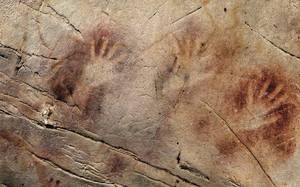
Samples have also been taken on the large ceiling of the bison of the cave of Altamira. It is one of the most important areas of the cave: a sky decorated with bison, horses, deer and signs. Specifically, they have been able to determine the age of some triangular signs, and according to these studies they are at least 36,000 years old. "A few years ago a debate was opened on the paintings of the cave of Altamira. The scientists discussed whether the ceiling of the bison had been made in a short or broad period. That is, if the paintings were made between 20,000 and 12,000 years or in a broader period," said García Díez. "The debate has been clarified with the data we publish. Today it can be seen that in Altamira from 36,000 years to 12,000 years the humans had carried out pictorial works. The cave of Altamira was used for thousands of years as cave art. Somehow, the current cathedrals have been used for centuries."
The oldest dating dates have been made in the cave of El Castillo, in Cantabria. For example, one of the human hand figures found in the cave hollow is at least 37,300 years old. In addition, they have dated the oldest painting in Europe. The confirmation that a disc drawn with red pigments is at least 40,800 years old has put new hypotheses on the table. "The results have not only been significant in this case, but have been extraordinary in opening a debate on the authors of these paintings. It has been questioned whether these non-figurative paintings were made by Neanderthals," said García Díez.
These images are at least 40,800 years old, and there is the border between Neanderthals and modern men, according to researchers. Scientists make different interpretations or readings, but between 39,000 and 42,000 years there may be a border between the two. "If we had reached a little further back in time, the debate would have been completely closed," he added.
In the coming months scientists will carry out new studies in Andalusia, France, Asturias and Cantabria. They will focus on non-figurative images, which are the ones that give the oldest datations, with the aim of obtaining new significant data in the debate on the authors.



